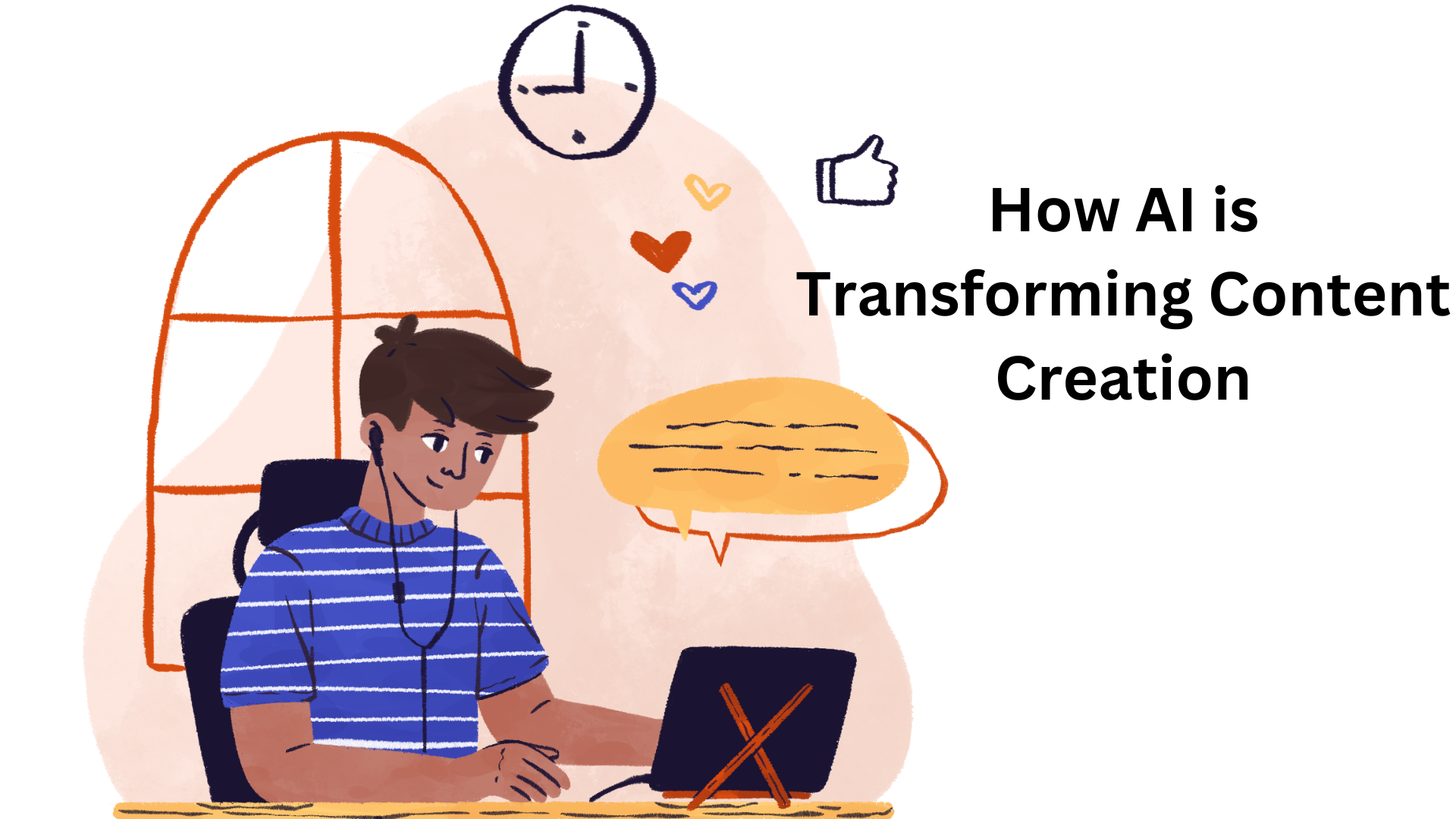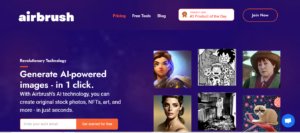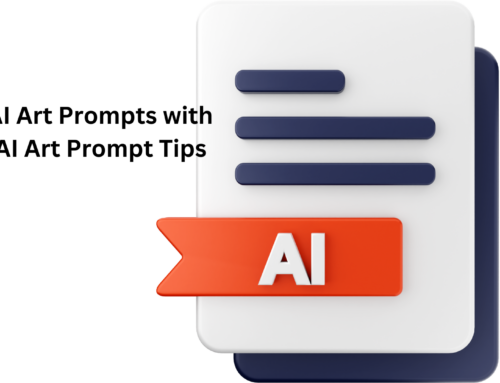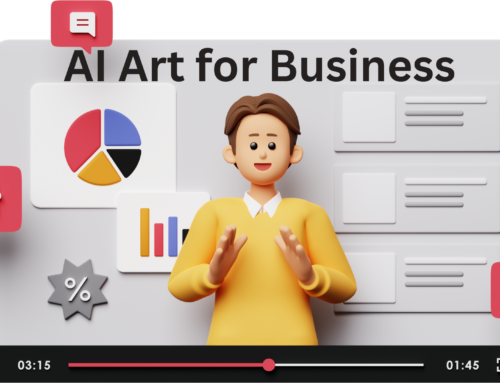The world of art is changing fast, thanks to the rise of NFTs and AI. In this new age, AI algorithms are helping artists create unique digital art that can be bought and sold as NFTs on the blockchain. Traditional art methods are being joined by AI-generated NFTs, bringing fresh and exciting possibilities to the art world. As AI and NFT art technology evolve, artists are finding new ways to blend creativity and technology, making the process of art creation more innovative than ever before. Let’s explore how AI in NFT art world is shaping the future of digital and generative art.

The Rise of AI in Content Creation
The use of Artificial Intelligence in generating digital assets is becoming increasingly common. Marcella Julia, marketing specialist at Titoma – Electronic Design for Manufacturing in Taiwan and China, highlights several potential use cases for AI-generated art. “Potential use cases for AI-generated art in creating digital assets:
– Marketing: Create an eye-catching graphic both for advertising materials or social media content. It can also help create interactive filters and effects to be used on social media platforms (e.g., Instagram, Snapchat, etc.).
– Website design: Create a website icon, banners, blog post featured images, and other website elements.
– Product design: Visualizing prototypes and product concepts.
– Visual aids: Creating educational materials, slides, and diagrams to support teaching and presentations.”
Benefits and Challenges
AI-generated art offers numerous benefits, especially for small businesses and startups with limited resources. Santosh Kumar Jha, Digital Marketing at GoXwide, points out that these tools enable brands to produce engaging visuals at a scale previously unfeasible. Startups and lean content teams can create everything from website graphics to social media creatives quickly and cost-effectively. However, he also emphasizes the importance of being cautious with IP and legal issues. Brands must establish strict usage policies and approval processes reviewed by IP counsels to avoid potential copyright conflicts and ethical concerns. “As someone who has been in the digital marketing trenches for over a decade, I’ll be upfront – the emergence of AI art generators like DALL-E, Midjourney and Stable Diffusion has been a bit of a pandora’s box. On one hand, these tools have unlocked amazing possibilities for brands to produce engaging visuals at a scale that was previously unfeasible for teams operating with limited design resources. I’ve seen some scrappy startups and lean content teams using AI art to create everything from website graphics to social media creatives in a fraction of the traditional time and cost.
But having been through many IP and legal disputes over the years, I also have some serious reservations and words of caution. Even though these models are built on fair use practices, there are so many murky areas around what constitutes infringement when you start commercializing and monetizing the outputs for marketing purposes. I’ve had our legal team reject some AI art concepts because the potential copyright conflicts were too high-risk.
And beyond just the letter of the law, there are thorny ethical questions we constantly grapple with. Is it truly above-board to effectively plagiarize and repurpose artists’ work for commercial gain without their consent or compensation, even indirectly through training data? There are also growing concerns around the massive carbon footprint of these compute-intensive models.”
Chris Kaiser Chris Kaiser, The CEO of Clickatree, shares a different perspective. His organization uses AI art generators primarily for creating memes or fun graphics for direct customer interactions via channels like WhatsApp. He believes that AI isn’t yet advanced enough to create stunning content for their website. For them, authenticity is key, and real images from their projects are more suitable. However, AI-generated artwork adds an element of fun in customer interactions, showcasing the lighter side of AI’s potential.
“We mostly use AI art generators to create memes or similar. We then send them via direct channels, e.g. Whatsapp.
In our opinion, AI isn’t advanced enough yet to create stunning content for our website or similar. Also, since we base our business on authenticity, we prefer to use real images from the reforestation projects we run. Creating AI images could lead to the idea of “it’s all fake”.
But for direct customer interaction, AI generated artwork is a lot of fun! :)”
Personalization and Customization
AI’s ability to offer infinite personalization is a significant advantage over traditional stock photos. Rochelle Ratkaj Moser, The founder and CEO of Ratkaj Designs, explains that AI technologies like Airbrush provide a potent approach to creating visual content for blogs and social media. AI allows for rapid and simple production of images that can be highly targeted and specialized. This is particularly useful for niche topics that stock photo companies often overlook. AI can create custom illustrations, infographics, and visual aids quickly, enabling businesses to stay relevant and engaging.
“Compared to traditional stock photos, AI technologies like Airbrush offer a more potent approach to create visual content for blogs and social media. AI allows for infinite personalization, in contrast to stock photos, which may lack customization, specialty subjects, needed diversity, and can feel generic. This is especially useful for subjects that are very targeted, specialized, or hyper-focused but are typically ignored by stock photo companies. AI enables them to rapidly and simply produce images that showcase their distinctive topics and connect with their target audience.
Although it’s always ideal to work with a designer, many companies and organizations don’t have the funds, time, or resources to take this approach. AI technologies can also work around the clock, offering fast turnaround times to accommodate hectic schedules.
Stock photos and illustrations, let’s face it, only go so far. Certain niche topics or content, although extremely fascinating, are only appealing to a particular group of people. Because of this, the stock photo companies are unable to continue. Some excellent examples of photographs that are just impossible to find are medical illustrations that demonstrate certain consequences, hyperlocal photography or circumstances that exhibit specific diversity, and situations that, although common for the client, aren’t frequent for the average person. AI steps in to close this disparity. There are countless alternatives for creation, enabling firms to obtain just what they require without the requirement for a stock photography agency. Historically, creating an infographic has always required time and a designer. These days, it may be completed swiftly and easily, enabling changes on the fly as new data becomes available.”
Ensuring that AI-generated art does not infringe on copyrights or intellectual property rights is crucial. As Marcella Julia suggests, “To make sure that AI-generated art doesn’t infringe on copyright and intellectual property rights, we must ensure that the data sources or materials used for creating the AI-generated art are acquired legally. This can be done by going through the terms of service of the art generator.” Rochelle Ratkaj Moser adds “This is tricky. Everyone is capable of violating copyright and intellectual property. The issue isn’t really about the means of generation, it’s the result. In other words, the responsibility is on the person using the tool not to generate those images. In other words, if you tell AI to generate a beloved character- and it makes that character – it’s copyright infringement. And inevitably the prompter is the one who should be responsible for such copyright infringement, just like any other user of a means of production.
On the other hand, as famously said by Stanley Kubrick, “Everything has already been done”. Art is about inspiration and building on others ideas, but space and originality needs to be respected. Artists also need to take steps to protect their work by opting out of being used to train AI models, protecting their portfolios using watermarks, and protecting their websites being used by AI.
Further protection and laws are needed, but this isn’t a new issue, it’s just a new medium.”
The Future of Content Creation
The integration of AI in content creation is an ongoing journey. As Santosh Kumar Jha aptly puts it, “AI art generators can be powerful tools, but brands need to be extremely diligent about establishing airtight usage policies and approval processes reviewed by IP counsels. Having visibility into what data the models were trained on, clearing outputs against watchlists, adding human-disclosures wherever the art appears – it all needs to be baked into your content production workflows.
And even after crossing those Ts, you have to be prepared to course-correct. As lawsuits and consensus around ethical AI practices evolve, those usage policies will inevitably need revising. It’s a bit of a wild west right now that requires continuous education and flexibility from marketing teams.
Those are just some of my uncensored thoughts after being an early experimenter with this technology. I’m probably more risk-averse than others, but I’ve seen too many brands get burned by moving too fast on emerging channels without air-tight governance.”
How AI is Shaping the Visual Landscape of NFTs
AI is revolutionizing the NFT art world by transforming how artworks are created and valued. In the burgeoning NFT art ecosystem, AI tools are being increasingly utilized to generate unique and captivating artworks that captivate collectors and enthusiasts alike. The impact of AI in NFT marketplaces is profound, as it enables artists to explore new creative frontiers and produce AI-generated NFT art that pushes the boundaries of traditional art forms.
By using AI, artists can experiment with generative AI techniques to produce diverse and innovative NFT artworks, thus reshaping the visual narrative in the NFT space. This integration of AI in the NFT market not only expands the possibilities within the art market but also underscores the evolving relationship between technology and creativity in the digital age.
Moreover, the integration of AI technology in NFT art not only revolutionizes creation but also redefines how artists and collectors perceive and interact with digital art forms.
- AI technology facilitates the creation of generative art in the NFT art world, where AI systems autonomously produce artworks based on algorithms and data inputs.
- Human artists are leveraging AI image generators and AI NFT generators to explore new artistic expressions and reach wider audiences in the evolving NFT ecosystem.
- Understanding AI in NFT art is crucial for artists and collectors alike, as it reshapes traditional perceptions of art creation and consumption.
- AI artists are emerging as pioneers in the AI NFT space, pushing boundaries and challenging conventions through their innovative use of technology.
- The impact of AI on artists and collectors extends beyond creation to include valuation and authenticity in the growing AI NFT marketplaces.
The Unique Value Proposition of AI in NFT Art World
AI-generated NFT art brings a unique value proposition to the realm of art by combining creativity with advanced AI models. Unlike traditional art, which relies solely on human skill and interpretation, AI in NFTs introduces a new way of creating and experiencing art. AI algorithms can prompt engineering and generative AI to work together, producing artworks that are both innovative and responsive to market trends.
The authenticity of digital art is also bolstered by AI. AI models can be used to verify the origin and uniqueness of each piece, addressing concerns about authenticity in the digital art world. Moreover, AI isn’t just about creating static images; it can be used to generate interactive NFTs that engage viewers in new ways, blending art and technology seamlessly.
In the evolving landscape of AI in NFTs, the potential for AI to be used in creating unique NFTs is vast. AI also ensures that the artworks are unique and cater to the tastes of collectors, making it a valuable tool in the hands of artists and art enthusiasts alike.
Challenges and Considerations for AI-Generated NFT Art
When exploring AI-powered NFT art, we encounter significant challenges and considerations at the intersection of AI and human creativity. AI’s ability to engage with art on emotional and cultural levels remains a crucial concern. While AI can generate art, its understanding of the deeper meanings and context that humans attach to artworks may be limited. This raises questions about the authenticity and value of art made by AI within NFT collections. Furthermore, the traditional art market, which has long relied on human creativity and craftsmanship, now confronts the emergence of digital assets like NFTs created by AI.
Considerations for AI-Powered NFT Art:
- Authenticity and Value: Questions arise about how AI-generated art fits into the established framework of art valuation and appreciation.
- Ethical Implications: The ethical considerations of AI-generated art and its impact on traditional artists need careful examination.
- Blockchain and Ownership: The role of blockchain in verifying ownership and authenticity of AI-generated NFTs adds complexity to the ecosystem.
AI has the potential to reshape the NFT art landscape significantly. However, integrating AI into this domain necessitates addressing these multifaceted considerations. The success in the NFT market often depends on how it complements or challenges traditional notions of creativity and ownership. As stakeholders navigate these complexities, they must balance innovation with the preservation of human artistic expression and cultural significance.
Ownership and Attribution in the Age of AI Art
In the age of AI art, questions surrounding ownership and attribution are crucial as we navigate the fusion of AI and NFTs. AI’s capabilities to generate art NFTs have opened up new possibilities, including the creation of interactive NFTs. As we imagine a world where AI and artists work together to create, the issue of attribution becomes complex. While AI can create artworks autonomously, defining ownership and attributing credit on NFT platforms remains a challenge. The future of AI in the art industry holds potential for groundbreaking developments, but it also raises ethical questions about authorship and the role of human creativity.
Ownership and Attribution in AI Art:
- Defining Authorship: Determining who owns AI-generated artworks and how credit is attributed poses challenges in the NFT ecosystem.
- Ethical Considerations: The ethical implications of AI’s role in creating art NFTs, especially concerning traditional notions of creativity and authorship.
- Collaboration vs. Autonomy: Exploring how AI and human artists can collaborate effectively while maintaining clarity on attribution and ownership.
Art is also evolving on AI platforms, with the potential for AI to create not just static artworks but even interactive NFTs. As AI continues to influence the art NFT landscape, understanding these dynamics is crucial for artists, creators, and collectors alike.

Airbrush AI: Transforming Creativity in the NFT Art World
Airbrush AI is a text-to-image generator tool that is making waves in the NFT art world. This innovative tool allows users to create detailed and artistic images from textual descriptions. Its impact on the NFT art scene is significant as it democratizes the creation process, allowing artists and creators to visualize their ideas swiftly and with precision. Understanding how tools like Airbrush AI work and their potential to revolutionize digital art is essential for anyone interested in the intersection of AI and creativity.
Features of Airbrush AI:
- Text-to-Image Generation: Transforms textual descriptions into visual artworks.
- Detail and Precision: Creates detailed and artistic images based on input text.
- User Accessibility: Democratizes art creation by making it accessible to a broader audience.
- Integration with NFT Platforms: Facilitates easy integration of generated artworks into NFT platforms.
- Artistic Impact: Explores new dimensions of creativity and expression in digital art.
Tools like Airbrush AI not only simplify the creation process but also expand the horizons of what is possible in digital art. As AI continues to evolve, understanding its role in tools like Airbrush AI becomes increasingly crucial for artists and creators looking to leverage technology in their artistic pursuits.







Leave A Comment